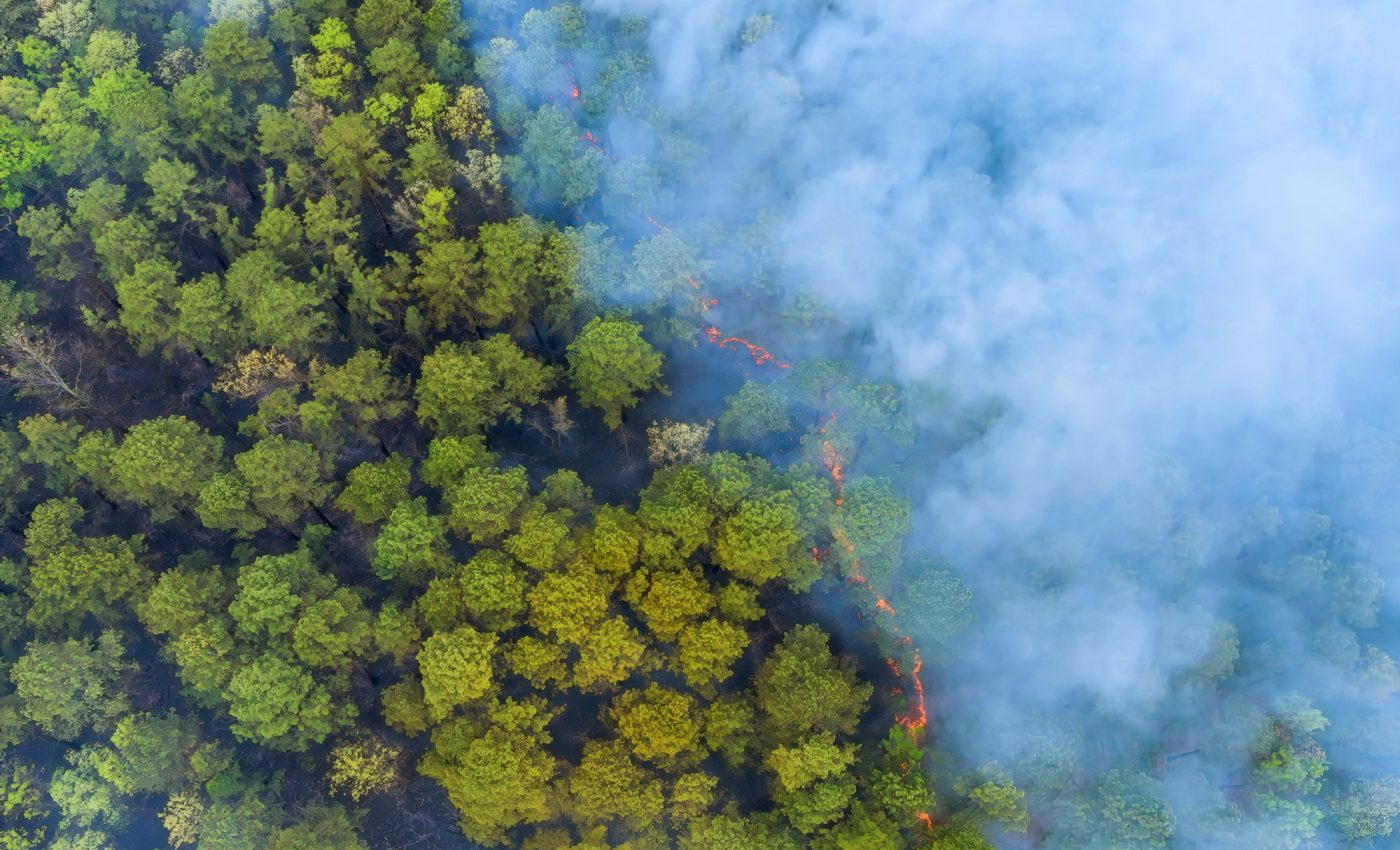
Wildfire smoke: An unexpected ally in forest regeneration
Smoke is usually associated with the destructive, relentless power of wildfires. But scientists at Oregon State University have stumbled upon an unexpected boon for forests from this ominous byproduct. It turns out, wildfire smoke has a cooling capacity that gives a leg up to vulnerable seedlings battling harsh climatic conditions.
The study was led by Amanda Brackett, a faculty research assistant at the OSU College of Forestry. The major aim of this investigation was to understand how heat waves and future climate conditions might influence canopy cover’s effect on temperature.
To examine the temperature-induced stress on conifer seedlings under different canopy conditions, the team analyzed data from laboratory studies focused on the heat stress responses of seedlings.
“Tree regeneration is an indicator of forest resilience and an important ecological process, but young seedlings are extra vulnerable to heat stress,” said Brackett.
Navigating temperature stress
The research team, including Chris Still and Klaus Puettman, analyzed stress degree hours – a metric that calculates the duration and intensity of high temperatures that can impair tree regeneration.
“This work shows that widespread smoke from wildfires can lead to unanticipated beneficial effects by reducing sunlight at the surface and thus lowering the temperatures experienced by vulnerable tree seedlings, even during extreme summer weather like the 2021 heat dome period,” said Professor Still.
Wildfire smoke and forest regeneration
In the summer of 2021, the scientists examined 11 different stands of recently thinned, 50-year-old Douglas-fir in the Upper Blue River Watershed in western Oregon’s Willamette National Forest.
Unfortunately, this area was heavily affected by wildfire smoke due to the Middle Fork Complex and Washington Ponds fires.
What did they find? Every 10% increase in canopy cover resulted in maximum temperatures lowering by 1.3 degrees Celsius (2.34 degrees Fahrenheit) at 2 centimeters (0.79 inches) above ground level.
The odds of temperatures surpassing the stress thresholds for conifer regeneration dropped by a quarter, and total stress degree hours reduced by 40 percent.
“Those reductions are large enough to be worthy of attention when managing for tree regeneration,” said Brackett.
The smoke effect
The impact of smoke on maximum and average near-surface temperature equated to a temperature reduction triggered by a 15 percent increase in canopy cover. This was an illuminating discovery, drawing attention to the ecological benefits of natural wildfires, despite their notorious reputation.
“Smoke absorbs and scatters incoming solar radiation, reducing how much reaches the forest floor, but we did not anticipate seeing this level of impact,” said Brackett.
The additional cooling effect could play a crucial role during extreme heat events when the protection offered by canopy cover and topography may not be sufficient to safeguard against lethal temperatures in the understory.
Challenges and limitations
Despite the promising results, the study also acknowledges certain limitations. The variability in smoke density and the duration of its presence can greatly influence the degree of cooling.
Furthermore, smoke itself poses health risks to wildlife and humans, indicating that while there are benefits, they come with substantial trade-offs. The study also focused on a specific geographic area and forest type, meaning the results may not be universally applicable.
Future research could aim to explore these dynamics across different ecosystems and smoke conditions to build a broader understanding.
Future research directions
Looking ahead, the research team expresses a keen interest in delving deeper into the multifaceted role of wildfire smoke in forest ecology.
One of the proposed avenues involves examining the long-term effects of repeated smoke exposure on various plant species. Additionally, expanding the scope to incorporate other regions and forest types will provide a more comprehensive picture of how these phenomena interact under diverse climatic conditions.
Ultimately, this body of work underscores the necessity of integrating interdisciplinary approaches in forest management and climate resilience planning.
Future management of forests and wildfire smoke
The regeneration of trees is crucial for establishing the diverse structure found in healthy, multi-aged forests. This study emphasizes the importance of considering the circumstances endured by young saplings when designing and executing forest treatments.
“Given climate predictions, scientists and managers have to look for opportunities to increase individual tree and forest-level resilience to a hotter and more extreme climate,” said Brackett.
“Wildfire smoke will continue to affect ecosystems and while we documented an unanticipated benefit, more work is needed to untangle other potential impacts.”
The study is published in the journal Canadian Journal of Forest Research.
—–
Like what you read? Subscribe to our newsletter for engaging articles, exclusive content, and the latest updates.
Check us out on EarthSnap, a free app brought to you by Eric Ralls and Earth.com.
—–













